Chicago has been described as a tough place to live. For far too many, the city symbolizes corruption, segregated communities and violence. However, on rare occasions there is that anomaly that holds a deep connection and fascination with Chicago’s art community and history. Aside from university studies in New Mexico and Wisconsin, the painter, William Conger, has spent the majority of his life living in Chicago, creating perspicacious abstract paintings and tracking the region’s rich history. During a visit to Conger’s Ravenswood studio earlier this month, The COMP Magazine had the opportunity to discuss with him his relationship with the city, his 2014 exhibition of gouache paintings on paper at Eastern Illinois University’s Tarble Art Center and why teaching studio art offers a tactile interaction filled to the brim with varied human experience.

(Fig. 1) William Conger, Broadway, 1985, oil on canvas, 60×120 inches
Can we start with your relationship with Chicago? You grew up in the city, studied in New Mexico and Wisconsin, and then returned to eventually chair the department of art theory and practice at Northwestern University. I believe you are now living in the same neighborhood you spent your youth. I recall you mentioning “childhood ghosts” in our conversation. Can you expand upon this thought?
My family lived in several midwest cities before settling first in Evanston IL in 1941 and then Chicago in 1943. We lived 3000 North at Pine Grove and Barry Avenue in a large walk-up apartment. I went to the local Catholic grammar school on Belmont Ave. What I liked most about school was walking between home and school four times a day, including lunch time. The walk took me along Broadway, then as now a busy commercial street, and the leafy side-streets which in the 1940s were a mix of large private homes and lo-rise apartments. In later grammar school years I had informal after-school jobs in shops along Broadway. I stopped in to shine shoes for a half-hour in a shoe-repair shop on the walk home from school. I sorted empty soda bottles at the drug store. Later, in high school, I changed the marquee at the Lake Shore movie theater once a week, using a long pole to place Bakelite letters (for $2 and a free movie admission). One Christmas a pal and I sold Christmas Trees in a vacant Broadway storefront, working daytimes for a factory-employed boss seeking extra income. Although I earned a few dollars in these jobs I didn’t work for the money. My weekly allowance always exceeded what I earned. I simply loved working, having a job. There was enormous freedom for schoolchildren in those days. All of us played all over the neighborhood and in nearby Lincoln Park. Now, living in the same neighborhood again so many decades later and often walking the same streets, it’s easy to imagine myself as a youth walking alongside or just ahead or just behind or down the block. I imagine a ghost of myself erasing the time between then and now, seeing all of my past in the present. Of course, the neighborhood and streets are different now, many of them widened, the old stores with low-hanging awnings gone, the clanging wooden streetcars and blinking signs vanished. Stately homes and even many apartment buildings are gone, too, replaced by less appealing structures. Nowadays the whole area is a vibrant center of youth-centered American multiculturalism. My painting Broadway, 1985, (Fig. 1) now in the permanent collection of the The Art Institute of Chicago, was inspired by my childhood memories of the busy loud street of that name, with its criss-crossing overhead cables, clattering streetcars and honking autos, contrasted by the nearby quiet lushness of Lincoln Park and the moody horizon of Lake Michigan. Now, I happen to live in a nearby high-rise overlooking the lake, the park, and the city. When I began teaching at Northwestern University in 1984, my faculty office window offered a view of the Hinman Avenue house where I had lived with my parents and sisters in the early 1940s before our move from Evanston into Chicago. So there, too, I’ve had everyday experience with childhood memories. The associations, memories, and feelings of youth, happy or sad, treasured or traumatic, do constitute a source for my creativity. I don’t aim to depict them in my art, but my abstract imagery is suffused with the kinds of childhood feelings I recall joined with a larger engagement with art and life.
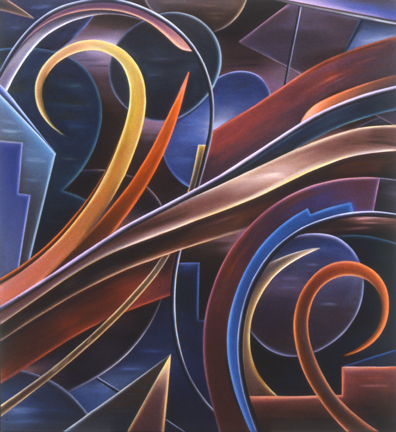
(Fig. 2) William Conger, Rookery, 1989, oil on canvas, 58×54 inches
What do you value most in the process of painting?
For a long time I tried to avoid thinking about process — the physical making of art — in order to feel the innermost sensation of meaning and express it in abstract imagery made up of quasi-organic-geometric shapes and modulated colors. I didn’t think much about how to do that. I aimed for the most simple way of doing a painting which I equated with the most honest way of making a painting. I wanted to create the final composition as quickly as I could, by whatever means would work. I decided to use traditional tools — brushes, oil paint, canvas, ordinary shop tools, rulers, compasses, stencils and tape — and to mix paint and apply it directly, trusting impulse without planning. Working intuitively and quickly was a carryover from my student days as an abstract expressionist, but my simple and cleanly painted surfaces were more akin to the post-painterly tradition of the 1960s and 1970s. I didn’t want to become involved with fussy paint applications, with contrived painterliness, or with the gesture being frozen in paint texture. In fact, I didn’t want to paint from the surface forward into literal space, but from the surface inward, as if melting the surface, to show the composition just behind, or as if it were floating in water just at the surface or just below it. This, to me, was the pictorial realm of illusion and make-believe. This has been the realm of painting since the Renaissance. This form of application enabled, even provoked, imaginative associations and pretended representations. With abstract imagery my turn to illusionism seemed to open up ambiguous and even paradoxical readings and feelings. After a few years of painting that way the whole process became more demanding for me. I began using subtle glazes and overpainting to suggest atmospheric space even though my shapes usually retained the hard edges of flat abstraction and thus contradicted or resisted pictorial space as an extension of real space. An example of this can be seen in Rookery, 1989 (Fig. 2). My work has often been misunderstood in this respect because it presents and then contradicts the commonplace idea that abstract painting must respect the flatness of the picture-plane. Further, it suggests a surreal content, or at least a fantasist content, which has been on bad terms with abstract painting for a long time but now, finally, may be gaining respect, judging by the increasingly ‘surreal-abstract’ work being done by younger artists. Nowadays, my painting process has become more complicated with preparatory sketches and extensive underpainting. But my overall favoring of illusionist space mixed with flat space remains. However, to test my own convictions, I have from time to time produced other works, often collage, where the process of layering onto a surface — creating a literal image — is followed. Like every serious artist, I like to experiment and play with art materials. Some results of that alternative activity do seep into my work and then there’s heavier texture or looser paint application. My collages and wood-collages are examples of that as illustrated in Woodwork from 1982 (Fig. 3).
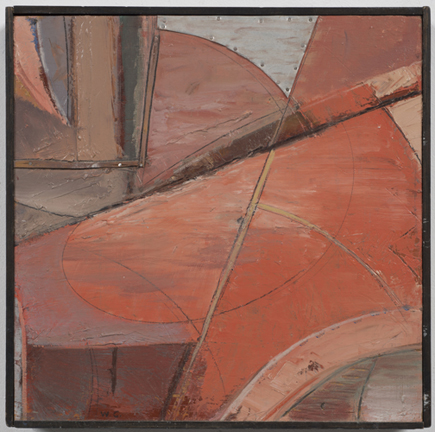
(Fig. 3) William Conger, Woodwork, 1982, mixed media, 12×12 inches
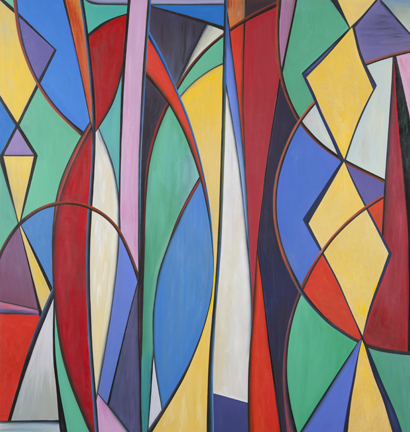
(Fig. 4) William Conger, Partisans, 2012, oil on canvas, 74×70 inches
In 2014, Denise C. Noell noted your fascination with ambiguity in her essay that accompanied your Gouache Paintings on Paper exhibit at the Brained Gallery, Tarble Arts Center at Eastern Illinois University. Can you share with us this interest in ambiguity and how this intersects with your ongoing investigations?
By ambiguity I mean the multi-layered meanings of words, as in poetry where a single word might refer to many specific things, events, ideas, often contradictory, as a device to amplify associations and nested meanings. I don’t mean ambiguity in the more commonly understood way as indicating vagueness or confusion. For example, my painting Partisans, 2012 (Fig. 4) is made up of intersecting abstract shapes that all but fill the picture, leaving little open space or background. These shapes line up as if they were defending a space behind them. The word partisans is a political term denoting adherents to a political cause, defenders of a state, enemies of competing political parties, even being saboteurs or guerrilla fighters. I imagine that my abstract shapes, allied with the formal notions of modernism, are defending their pictorial space and confront its attackers (art historical deconstructionism) as unified and belligerent with pointy shapes like spears and armor. Thus, I use a title that not only evokes a political reality outside of art as a reference to real events, but one that also suggests that abstract painting has its partisans and even the painted shapes and colors are themselves partisans defending a realm of art. It’s important to me as an artist to insist that visual imagery is always multi-layered in its associative purposes. By using abstract shapes and colors that are not representationally specific, I elicit multi-layered ambiguity — many meanings — that engage viewers‘ emotional and intellectual responses, both personal and public. My effort to use titles to provoke ambiguity is also an effort to encourage subjective make-believe or narratives as meaningful even when different, often contradictory, public or cultural meaning is assumed. In reading Marcel Proust, one is continually reminded of this truth and I have titled paintings after his topics to make the point. My painting, The Fugitive, 2012, (Fig. 5) refers to Proust’s character, Albertine, who abandons the narrator with the note, “Our life together has become impossible.” Artworks are fugitives, too. There is scarcely a private moment in artists’ lives when they do not fear being abandoned by the muse, or even by a painting they are making that suddenly seems hopelessly wrong. That is the underlying anxiety caused by the desire for assured creativity accompanied by a constancy of doubt. It’s a peculiar but necessary anxiety. It spurs artists to new resolve, effort, and conviction. Indeed, art is elusive. Making and seeing a painting exemplifies our trying to keep it from fleeing from us. My painting, Prisoner, 2014 (Fig. 6) is a vertical composition of oddly connected shapes. It suggests how composition is an imposed order and questions whether art is more about the order of a composition or about the implicit loss of order. Is it the mind that creates order in apprehending a composition and delights in its power to do so even though there’s nothing to prove that independent order exists in art? My painting, Night Signs, 2014 (Fig. 7) asks that question. It evokes the bright urban signage at night, but it also suggests abstract shapes as unassigned signifiers, signs in the dark without clear signifieds, since the shapes are not explicitly representational. They are like nonsense words, meaningless until a context is created or identified. This is the ambiguity of abstraction. Neither images nor words are meaningful until a signified, or many of them, are chosen. (My article, Abstract Painting & Integrationist Linguistics), Vol. 23, issue 4, 2011.
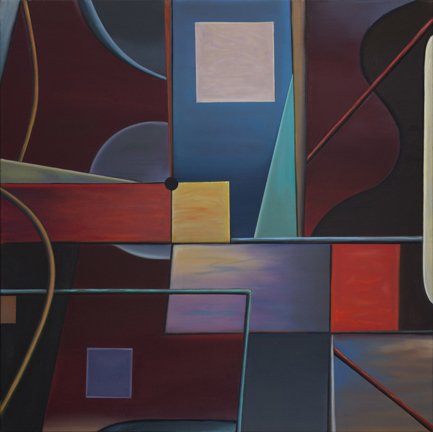
(Fig. 5) William Conger, Fugitive, 2013, oil on canvas, 32×32 inches
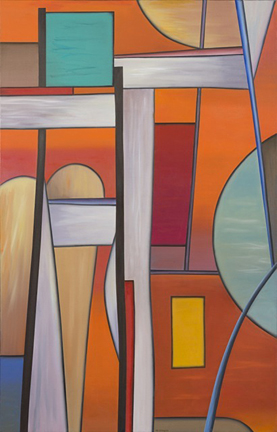
(Fig. 6) William Conger, Prisoner, 2014, oil on canvas, 56×36 inches

(Fig. 7) William Conger, Night Signs, 2014, oil on canvas, 6×36 inches
I found your interest in Chicago history intriguing. Where do you see abstraction fitting into the art history of the city?
As a youngster I acquired a strong interest in books. My father was an executive at Encyclopaedia Britannica and so we always had a huge number of books of every kind around the house in addition to different sets of encyclopedias like the World Book and the Book of Knowledge. I was fascinated by encyclopedia photographs and illustrations: maps, world cities, animals, art, machinery, ancient sites, peoples of the world. Also, the museums were mostly free and it was common for kids aged ten to twelve, even, to visit museums on their own, riding a streetcar, a bus or the ‘L’ back and forth. The Chicago History Museum was one of my favorites, along with the Art Institute and the Field Museum. At the Chicago History Museum (then the Chicago Historical Society) there were displays of the Chicago Fire artifacts and, of course, much else about the early history of Chicago and Illinois. Unlike, say, New York with nearly 400 years of history, Chicago is a young city and most of its past is easily recoverable, both in terms of records and artifacts. Even some early buildings still stand. I’ve always tried to link my love for history to my art. I like to find metaphors that combine the formal aspects of my abstract paintings with historical places or events. For example, my painting titled Webster Bridge, 1996 (Fig. 8) refers to the old bascule bridge at Webster Street and the Chicago River, a busy site in early Chicago. This also evokes the bridge between abstraction and the constant traffic of personal daily experience. Because my paintings seem constructed of separate shapes and colors, they can be associated with assemblages of architectural and engineered parts. For years I’ve been collecting out-of-print books on Chicago History and constantly refer to them as inspiration for painting. I’m always on the lookout for excavation and construction sites where one can glimpse traces of Chicago’s buried past. However, my interest in history reaches well beyond Chicago to include an eclectic range of American and World History. My educational background, too, has kept me engaged in literature, philosophy and the sciences. Every so often I write and publish art commentary. (See links, below). And, I continue to be fascinated by archaeology. Throughout my career I have joined digs in New Mexico, and at Cahokia Mounds in Southern Illinois (where a highlight was the moment — it was a very hot August day — I uncovered a rare painted shell and felt I had clasped hands with another artist across a thousand years); I’ve visited many sites in America and elsewhere, including several trips to Jamestown, South Carolina, where new artifacts are found daily. I watched a street dig in Rome, Italy, where a newly discovered ancient arch — its peak was just below the roadway surface — was being carefully uncovered down to its base twenty or thirty feet below.

(Fig. 8) William Conger, Webster Bridge, 1996, oil on canvas, 18×18 inches
As an educator, you noted the value of this experience. Where there any specific items you regularly shared with your students during your tenure?
My 40 year teaching career extended from a Community College to a small Liberal Arts College to an urban University, and finally to a major research University. (I am currently professor emeritus of art theory and practice at Northwestern University). Over those years I acquired experience with all levels of teaching to a full range of college art students, from retired adults seeking part-time general education to exceptionally gifted young graduate students preparing for professional careers as artists and educators. I also served as a department chair at two universities and engaged in many aspects of higher education administration and curricular planning, boards committees, and the like. Mostly, I thoroughly enjoyed my academic career and cherish the memories of wonderfully creative students and stimulating, knowledgeable colleagues. But my own education as an artist at the School of The Art Institute in Chicago, The University of New Mexico, and finally, the University of Chicago — where I earned the M.F.A. in 1966– did not prepare me for teaching at all. I came to full-time college teaching without one day of class-room or studio teaching experience! To overcome that shortcoming I was very intense and worked very hard to be prepared and well informed even as I often fumbled in my classroom performance. My first few years of teaching were ‘do or die’ teaching efforts. My total immersion and concentration showed. My students — in those early years — learned more about the intensity of art-making than they did about specific techniques or process. I improved gradually with experience and effort. I taught painting, drawing, design, and even general courses in world art history. Using my excellent background in art history, I made a habit of linking studio practice to historical models. But I had learned early that good art teaching requires a sincere interest in others; one must be very engaged in recognizing the creative impulse in others and be helpful but not proscriptive in aiding it. For that reason I was always alerting students to the variety of work in contemporary art, to exhibitions, to literature, philosophy, and art history, to nurture their individual interests and abilities, expand their grasps of ideas, inspire experimentation with art processes, and challenge them to attain excellence. I always encouraged my students to become well-educated, to be informed, articulate, curious, to lead a lively intellectual life meshed with complete commitment to studio practice, and to be open to the constant changes in how art is understood and recognized in culture. In teaching, I pushed more than I led.
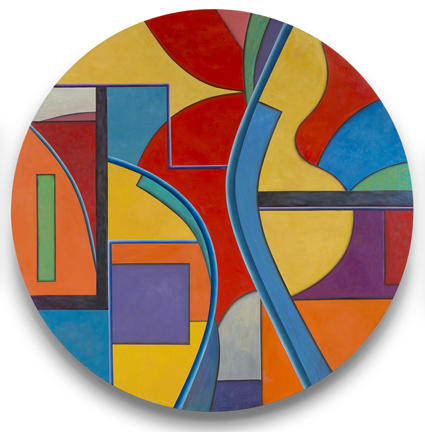
(Fig. 9) William Conger, Mundi, 2015, oil on canvas, 59 inches diameter
What’s up for the remainder of 2015? Do you have any upcoming exhibitions or paintings that are in process?
I’m installing a commissioned painting at the new Edgewater Branch Library in Chicago in October. See Mundi, 2015 (Fig. 9). I have work in shows at Loyola Museum of Art and at the Illinois State Museum – Chicago gallery. I also have a painting in the inaugural exhibition at the University of West Virginia Art Museum. (Ragtime, 2011) I’ll be in group exhibitions at Printworks Gallery in early 2015 and my solo show of new paintings will open in February at Zolla Lieberman Gallery in Chicago. One of the paintings to be included is From Chicago, 2015 (Fig. 10). In my studio I’ll be finishing new paintings and I’m planning to make a new group of gouache paintings and painting collages. At this time, I’m interested in vexing my habits for the sake of new work.
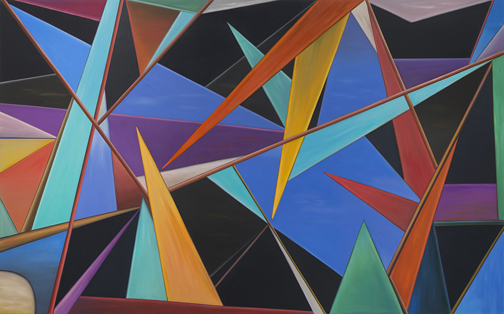
(Fig. 10) William Conger, From Chicago, 2015, oil on canvas, 60×96 inches
To view additional information on the artwork of William Conger, please visit:
William Conger – http://www.williamconger.com/
Interview with Julie Karabenick for Geoform – www.geoform.net
WIP Project: William Conger, “What is Painting”, July, 18, 2014 – www.neotericart.com
Also:
Conger, William, “Abstract Painting & Integrationist Linguistics”, Linguistic Sciences, Vol. 23, issue 4, 2011.
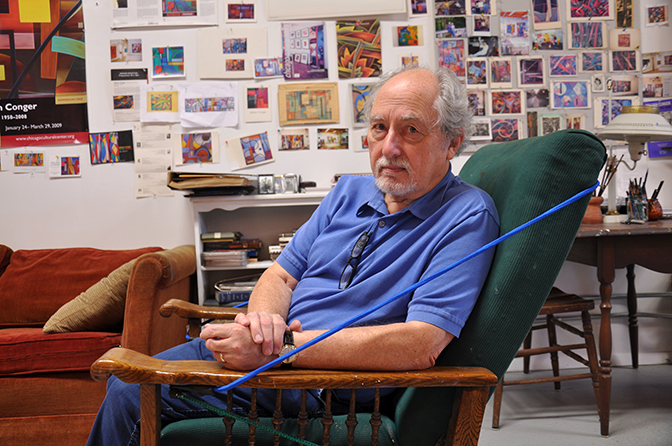
William Conger, painter, Chicago, 2015
Interview and portrait by Chester Alamo-Costello


